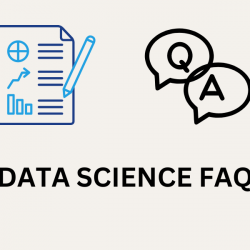A Simple Guide to data manipulation language


data manipulation language
Introduction
Data manipulation is a process used to manage and store data in a computerized system. It involves the use of structured query language (SQL) commands to manage information storage, retrieval, manipulation and integrity. SQL is the most widely used language for interacting with databases, allowing users to control access and modify data with ease.
When it comes to data retrieval, SQL allows you to filter and group specific sets of information from the database. You can also retrieve entire tables or distinct values from within a table. Data modification involves adding new records or modifying existing ones within the database. This includes inserting, updating and deleting entries as needed.
Managing data integrity is another important concept when it comes to data manipulation language. In order to maintain accuracy within a database, certain rules must be enforced that restrict actions like editing or deleting entries without authorization. Access control mechanisms are also put in place so that users only have access to certain functions depending on their permission level in the system.
The efficiency of database operations is key when it comes to managing large amounts of information quickly and accurately. SQL allows for indexes on certain fields so that queries can run faster when searching for specific values within the table structure. These indexes allow for quicker searches by incorporating elements such as sorting or filtering before returning results back to the user. Data Analytics Courses Kolkata
In conclusion, this blog post has served as a simple guide to data manipulation language and its many uses in managing databases effectively and efficiently.
Basics of Data Manipulation Language
Data manipulation language (DML) is a powerful tool for database management when combined with Structured Query Language (SQL) commands, allowing users to query, modify and manipulate the data stored in databases. While it might sound intimidating at first, understanding the basics of DML can help make working with databases easier and more efficient. Here’s a simple guide to getting started with data manipulation language.
First off, it’s important to understand exactly what data manipulation language is. Basically, DML is a set of instructions for interacting with databases that are written using SQL commands. When you write a DML statement, you are simply telling the database how to do something like access certain values from a table or create a new record in the database.
The most common and essential SQL commands used for DML are SELECT, INSERT, UPDATE and DELETE . These four core operations make up the core of all data manipulation within databases and understanding how they work together is key to successful coding. SELECT allows you to retrieve data from your database; INSERT lets you add new rows into existing tables; UPDATE allows you to change values in an existing row; and DELETE deletes existing rows from the table. Knowing when each command should be used and how they interact will help ensure accurate results when manipulating your data.
Different Types of DML Statements
Next is SELECT statements which are used to retrieve specific data from a database table or view by specifying exactly what columns and rows should be included in the result set. For example, if you wanted to select all product records from a specific category, you could use a SELECT statement for that task.
INSERT statements are used when adding new records to a database table. They allow you to specify which columns and values should be inserted into the table and can be used for single or multiple records at once.
UPDATE statements help update existing records in a database table by setting values for certain fields based on criteria defined by the user. For example, if you wanted to update a customer record based on their email address, you could use an UPDATE statement for this purpose.
DELETE statements are used when deleting existing records from a database table by specifying which rows should be removed based on criteria defined by the user. If necessary, backup information may be preserved when deleting using this method.
Submitting Instructions in the Database Server
A database server connects computers and allows them to communicate with each other. This is done using a data manipulation language (DML). DML is used to store and manage data in a database. It uses commands such as SELECT, INSERT, UPDATE, DELETE, etc., for data manipulation operations. Data Science Course in Kolkata
When submitting instructions in the database server, it’s important to keep your submission instructions organized and clear. This will help ensure that your instructions are understood correctly by others who may be working with them. Additionally, be sure to provide easy to follow process steps and readability tips that make following along easier for everyone involved.
It’s also essential that your submission instructions are efficient. Writing concise code takes time and practice but will help streamline processes significantly. Furthermore, take into consideration security when submitting instructions in the database server as any mistakes can have serious repercussions both for yourself and those impacted by it.
By following these few key points when submitting instructions in the database server, you’ll be able to create safe and efficient processes that are easy to follow whether you’re coding alone or with colleagues. Data Science Training in Chennai
Working with Complex Codes
When it comes to storing data efficiently, understanding how to work with databases is essential. Make sure that you understand how various drivers and APIs interact with the database, as this will help you write code more easily. Additionally, familiarizing oneself with popular SQL commands can also prove helpful in navigating complex code segments.
Manipulating data can often be complicated, but taking advantage of established procedures like using SQL queries in conjunction with drivers and APIs will make your life much easier. It’s important to understand how best to access different databases—for example, if you’re working with MySQL then ensuring that the correct driver is installed is key for successful manipulation of data. Additionally, reading through any available documentation on database connections can help yield better results when dealing with large datasets or specific cases involving complex codes.
Writing queries is essential for performing detailed data manipulation tasks—it allows you to search for specific data elements such as specific users or transactions rather than viewing all relevant records at once. Put together an effective query by understanding the structure of the database: think about which tables contain pertinent information related to your query and correlate them accordingly before writing any code segments. This will save time when revising code later on down the line.
Best Practices for Data Manipulation Programming
Organize & Structure Data: Having a systematic way of organizing your data is essential when manipulating it. Having a clear folder structure, naming conventions and standards helps you manage large datasets in an efficient and organized way, allowing you to quickly find what you need when working with complex sets of data.
Import & Export Data: Importing and exporting data are two of the most common tasks involved in data manipulation programming. It allows you to move your data from one system or format to another, making it easier for machines or programs to work with the data. When importing and exporting data, make sure you are familiar with the file formats that will be used and have tested your code before deployment. Data Analytics Courses Chennai
Use Appropriate Tools & Libraries: Using the right tools and libraries for the job can save a lot of time and effort when coding. Choose tools that have been well tested, are actively maintained, provide comprehensive documentation, and support various features like joining tables, sorting records by date or other criteria.
Design Efficient Queries: Writing efficient queries is an important part of manipulating large datasets with SQL (Structured Query Language). Designing queries that only return relevant information and minimize processing time involves understanding table relationships in your database as well as making use of advanced features like indexing columns and limiting returned recordsets.
Troubleshooting Common Issues with DML Programming
Data manipulation language (DML) programming can be a great way to access and manage data but, like any other form of programming, it can also cause problems. Even experienced DML programmers may experience issues when troubleshooting, which is why understanding common troubleshooting techniques is essential. This blog post provides a simple guide to troubleshooting common issues with DML programming.
Common Issues
When it comes to DML programming, there are two different types of issues that developers commonly encounter: syntax errors and logic errors. Syntax errors occur when the code has an incorrect structure or format, or when the code fails to follow the syntactical rules of DML. Logic errors happen when the code works but does not do what the developer expects it to do; this involves finding an error in the logic of the code rather than an error in its syntax.
Debugging Techniques
Debugging techniques vary depending on whether you are dealing with syntax or logic errors. For syntax errors, you should first check your spelling and grammar; correct any typos or mistakes that you find. Secondly, look at your data type declarations—are all fields declared correctly? Thirdly, check for missing punctuation marks like quotation marks or brackets; make sure they are all present and correctly positioned so that your code reads correctly. Lastly, if all else fails, consider using a debugger tool from a software vendor to help you pinpoint and fix any remaining bugs in your program. Data Science Course Chennai
A Simple Guide to data manipulation language
Let’s start with the basics: understanding what exactly DML is. DML is a language used to manipulate data stored in a database; it consists of commands that enable users to query, update, insert, delete and retrieve data from the database. With these commands users are able to control operations such as adding or changing records in the database.
Now let’s explore how DML can be used in various scenarios. One use case for DML is for querying and updating data stored in the database. Through SQL statements such as SELECT and UPDATE instructions, users can query for specific records or information and then either edit or delete them as needed. Similarly, they can also use the INSERT command to add new records into the database as well as execute search queries using WHERE clauses that narrow down results based on conditions specified by the user.
You can also use DML for retrieving information from the database according to certain criteria defined by user input – for example through the SELECT statement which allows retrieval of all columns and rows associated with certain criteria e.g., ‘SELECT * FROM my_table WHERE age > 25’ will return all records from table ‘my_table’ where age is greater than 25 years old.






Ingen kommentarer endnu